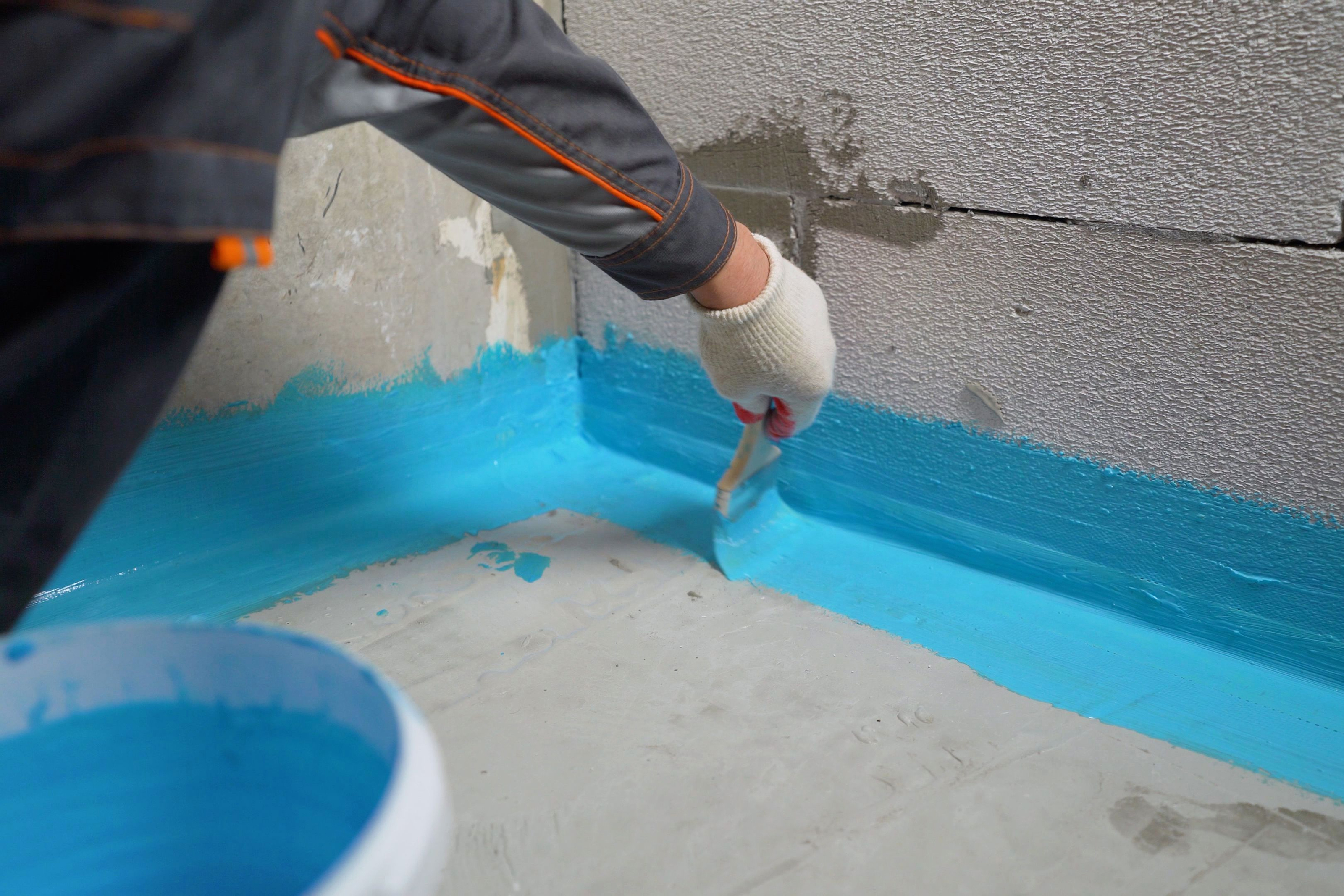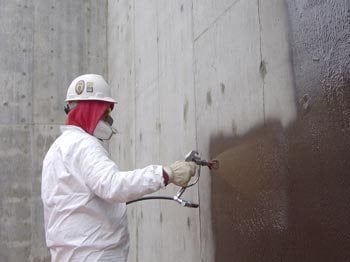Why Waterproofing Is Important for Resilient Frameworks: a Comprehensive Evaluation
Waterproofing plays a crucial role in the longevity of structures. It works as an obstacle versus dampness, which can bring about substantial problems like mold and mildew and damage. Understanding the different waterproofing methods and their ramifications is vital for homeowner. The effects of overlooking this element can be severe. Exploring these aspects reveals not just the necessity of waterproofing, however likewise its more comprehensive effect on residential or commercial property value and safety.
Understanding Waterproofing: Interpretation and Relevance
Waterproofing functions as a crucial obstacle against dampness invasion, protecting structures from possible damage. It includes different methods and materials designed to prevent water infiltration right into structures, making sure long life and capability. The relevance of waterproofing can not be overstated, as it safeguards against a series of problems, including mold and mildew development, degeneration of products, and structural weakening.Effective waterproofing solutions can include membranes, coatings, and sealants, each customized to specific atmospheres and architectural designs. By producing a protective layer, these services aid keep a dry interior, which is vital for the health of residents and the conservation of residential or commercial property value.Moreover, buying waterproofing at the building and construction stage is considerably much more economical than resolving water-related issues after they arise. Comprehending the concepts of waterproofing is critical for designers, home builders, and property owners aiming for resilient, resilient structures that withstand the test of time and environmental difficulties.

The Influence of Water Damage on Structural Stability
Water damage postures considerable risks to structural integrity, mainly via the growth of mold and mildew and mildew. These microorganisms not only endanger indoor air high quality yet likewise lead to product destruction in time. Furthermore, long term exposure to dampness can damage structural elements, increasing the probability of collapse or failure.
Mold and Mildew Development
Wetness intrusion poses a substantial threat to the structural honesty of buildings, resulting in the expansion of mold and mildew and mold. These fungis grow in wet environments, frequently taking origin in surprise locations such as wall dental caries, under flooring, and in ceilings. Their growth not only produces unsightly spots and unpleasant odors but also adds to a decline in indoor air high quality, posturing health risks to residents. Mold and mildew can jeopardize materials like wood and drywall, causing more dampness retention and creating a cycle of damage. Early detection and remediation are necessary to avoid considerable growth, highlighting the requirement of effective waterproofing actions. Resolving dampness concerns immediately can protect both the health and wellness of citizens and the longevity of the framework.
Structural Weakening Threats
Uncontrolled moisture breach can bring about extreme structural weakening, jeopardizing the stability of buildings. Water damages typically affects foundational parts, such as beam of lights, columns, and walls, leading to jeopardized load-bearing capacity. Extended exposure to wetness can trigger materials like wood to rot and steel to corrode, weakening their architectural buildings. This degeneration may cause cracks, bowing, or also devastating failings if left unaddressed. Sump pump installation & replacement Omaha. Additionally, water infiltration can threaten the soil underneath structures, causing settling or moving that more worsens architectural risks. Therefore, applying efficient waterproofing remedies is essential in protecting a structure's structural stability, stopping pricey repair work, and making certain safety for residents. Correct upkeep and proactive steps are necessary in mitigating these significant dangers connected with water damages
Sorts Of Waterproofing Methods and Materials
Waterproofing methods and materials play an essential role in safeguarding frameworks from water damages. Trick techniques include membrane layer waterproofing, which gives a physical barrier; liquid waterproofing services that develop a smooth layer; and cementitious waterproofing options known for their toughness and convenience of application. Understanding these various methods is necessary for selecting the most suitable technique for specific construction needs.
Membrane Waterproofing Techniques
Membrane waterproofing methods are necessary for shielding frameworks from the destructive effects of water infiltration. These methods involve the application of water resistant membrane layers that develop an obstacle versus wetness. The two key kinds of membrane layer systems are sheet membrane layers and liquid-applied membrane layers. Sheet membrane layers, typically made from materials such as rubberized asphalt or polycarbonate, are erected and can be turned out and stuck to surface areas. On the other hand, liquid-applied membranes are used as a fluid and remedy to form a smooth layer. Both kinds offer flexibility and resilience, accommodating numerous applications, consisting of roofing systems, cellars, and foundations. Appropriate setup and maintenance of these membranes ensure long-lasting security, improving the lifespan and integrity of the frameworks they protect.
Fluid Waterproofing Solutions
Liquid waterproofing remedies stand for a flexible choice to typical membrane systems. These services typically entail the application of fluid coatings that treat to form a seamless, durable barrier versus water seepage. Various sorts of liquid waterproofing products are available, consisting of polyurethane, asphalt, and acrylic-based formulas. Each kind provides unique properties, such as versatility, attachment, and UV resistance, making them ideal for diverse applications. The application procedure often involves spraying or rolling the liquid onto surface areas, allowing for coverage of intricate forms and information, which decreases possible powerlessness. Liquid waterproofing services are especially beneficial for areas with movement, such as joints and fractures, as they can accommodate structural shifts without endangering honesty, making certain durable defense for structures.
Cementitious Waterproofing Options
Various cementitious waterproofing options are readily available, offering reliable options for different construction needs. These systems commonly are composed of a blend of cement, sand, and ingredients, making them appropriate for both interior and outside applications. websites Amongst the popular selections are crystalline waterproofing products, which react with dampness to develop a waterproof obstacle within the concrete matrix. In addition, flexible cementitious layers give improved flexibility, fitting minor architectural movements without endangering the waterproofing stability. It is also typical to utilize cementitious sealers for joints and fractures, ensuring detailed security versus water infiltration. On the whole, cementitious waterproofing choices are valued for their resilience, convenience of application, and compatibility with different substrates, making them a preferred option in modern-day building and construction practices.
Long-Term Price Cost Savings With Effective Waterproofing
Buying reliable waterproofing services can greatly decrease lasting costs for building proprietors and developers. By avoiding water breach, these solutions reduce damages to architectural elements, minimizing the demand for expensive repair services and upkeep over time. Waterproofing likewise secures indoor finishes and furnishings, decreasing substitute prices and boosting the overall life expectancy of the property.Moreover, efficient waterproofing can bring about power savings by improving insulation and reducing humidity-related issues. This leads to lower home heating and air conditioning expenditures, adding to an extra lasting financial model for building management.Additionally, the implementation of waterproofing steps can enhance residential property worth by making certain a completely dry, secure, and sturdy setting. While the first financial investment in waterproofing might seem substantial, the lasting economic benefits far outweigh the upfront prices, making it a sensible decision for anyone entailed in building or residential property administration.

The Function of Waterproofing in Structure Codes and Laws
Waterproofing plays a considerable function in structure codes and regulations, reflecting its significance in contemporary building and construction practices. These codes are created to assure safety and security, resilience, and sustainability in buildings, highlighting the requirement for efficient waterproofing procedures. Numerous nationwide and neighborhood building regulations outline particular demands for waterproofing materials and methods, especially in areas susceptible to water invasion, such as basements and foundations.Compliance with these policies not only safeguards structures from moisture-related damage but also safeguards public health by preventing mold development and architectural instability. Assessors commonly analyze waterproofing components during the building process to assure adherence to developed requirements. As climate change increases the regularity of severe weather condition events, the duty of waterproofing in building ordinance is anticipated to advance, possibly resulting in stricter regulations. On the whole, the assimilation nanotechnology waterproofing of waterproofing in regulative frameworks emphasizes its important function in achieving long-lasting, resistant structures.
Case Researches: Successful Waterproofing Solutions
Effective waterproofing options have been applied across various tasks, showcasing innovative strategies that improve structural honesty and longevity. One remarkable instance is the renovation of the historical Smith Tower in Seattle, where advanced membrane layer systems were utilized to shield the framework from water intrusion. This technique not only protected the building's visual but likewise extended its lifespan.In an additional case, a big commercial building in Miami made use of crystalline waterproofing innovation, which responds with moisture to create a barrier versus water. This solution verified effective versus the city's high moisture and heavy rainfall.Additionally, a bridge in San Francisco undertook a comprehensive waterproofing treatment using epoxy finishings, which substantially minimized maintenance costs and improved resilience. These instance studies show the performance of customized waterproofing techniques in varied settings, underscoring the significance of choosing ideal methods to address particular difficulties and assure the long life of structures.
Best Practices for Implementing Waterproofing Techniques
Carrying out reliable waterproofing strategies requires careful planning and adherence to finest techniques - Basement waterproofing Omaha. First, it is important to carry out a complete website evaluation to determine prospective areas of water ingress. This assessment educates the option of ideal products and methods tailored to specific environmental problems. Making use of top notch, long lasting waterproofing membranes can considerably enhance defense versus moisture.Additionally, appropriate installation techniques are essential; guaranteeing that surface areas are clean and totally free from pollutants promotes suitable bond. Normal maintenance checks should be scheduled to recognize any type of signs of wear or damages, enabling for timely repairs.Moreover, incorporating drain systems can efficiently handle water overflow, avoiding accumulation around frameworks. Educating all employees included in construction regarding waterproofing requirements more guarantees uniformity and adherence to finest techniques. Inevitably, a proactive strategy to waterproofing can significantly expand the life expectancy of frameworks and decrease lasting maintenance prices
Frequently Asked Concerns
How Does Waterproofing Affect Energy Effectiveness in Buildings?
Waterproofing considerably enhances energy performance in structures by avoiding dampness intrusion. This minimizes the demand for heating and cooling, keeps consistent indoor temperature levels, and ultimately reduces power intake, adding to long-lasting sustainability and price financial savings.
Can Waterproofing Be Applied to Existing Structures?
Waterproofing can certainly be put on existing frameworks. Various techniques, such as membrane layers, coatings, and sealers, make it possible for property owners to boost defense against moisture, consequently lengthening the framework's integrity and reducing potential damage gradually.
What Are the Indicators of Inadequate Waterproofing?
Indicators of inadequate waterproofing include water stains on walls, mold and mildew development, peeling paint, moldy odors, and dampness in basements - Drainage & waterproofing company Omaha. These indications recommend possible architectural damages and the demand for prompt interest to stop more damage
Just How Frequently Should Waterproofing Be Checked or Preserved?
Waterproofing ought to be examined at the very my sources least annually, particularly in areas with hefty rainfall or changing temperatures. Normal upkeep assurances very early discovery of concerns, advertising architectural honesty and lengthening the lifespan of the structure.
Exist Eco-Friendly Waterproofing Options Available?
Environmentally friendly waterproofing options are significantly readily available, using lasting products such as bio-based polymers and natural sealers. These options not just shield structures yet likewise minimize ecological effect, interesting ecologically conscious builders and residential or commercial property proprietors.